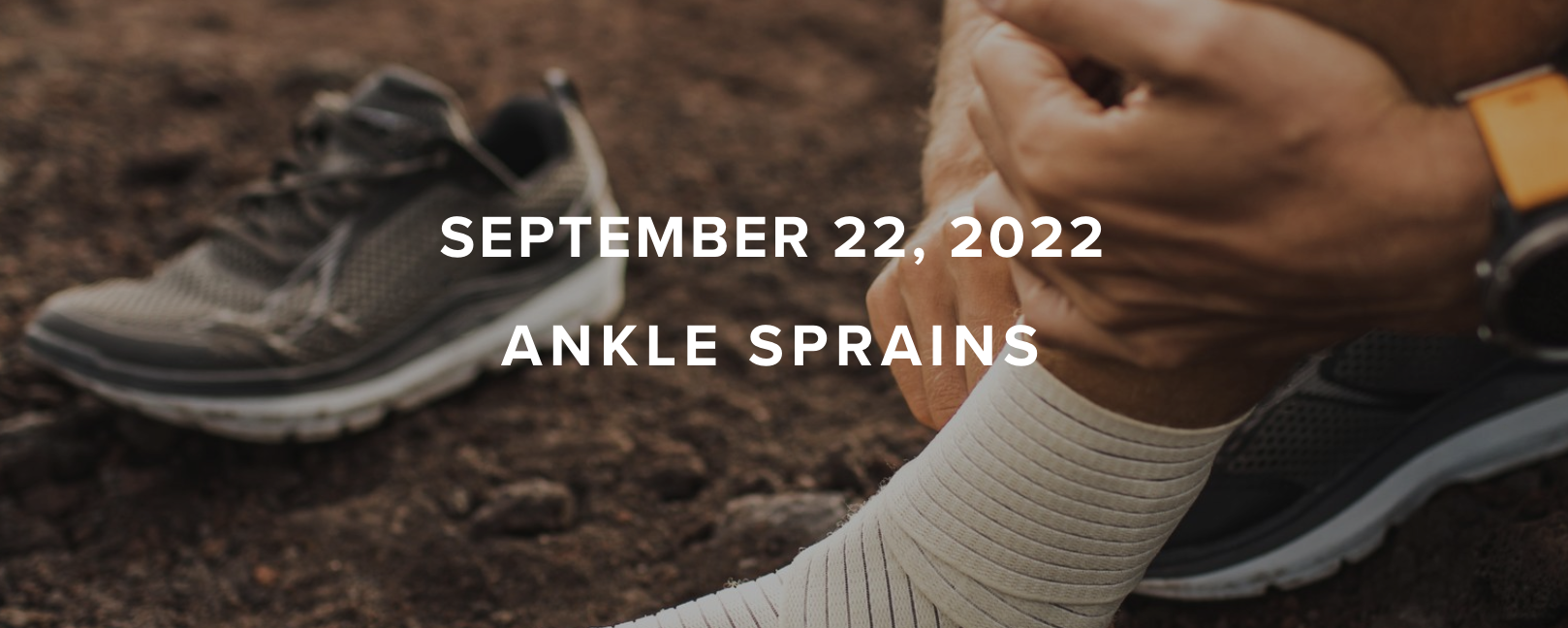Understanding Relative Energy Deficiency in Sport (RED-S): A Guide for Runners
If you're a runner, you may have heard of the Female Athlete Triad, a term once used to describe a combination of low energy availability, menstrual dysfunction, and bone health issues. However, our understanding of these conditions has evolved, giving rise to a broader concept: Relative Energy Deficiency in Sport (RED-S). This condition is not just for elite female athletes; it affects athletes of all levels and genders. Let’s break down what RED-S is, why it's important, and how you can protect yourself as a runner.
What is RED-S?
Relative Energy Deficiency in Sport (RED-S) is a syndrome that arises from Low Energy Availability (LEA), which occurs when the energy intake from your diet is not enough to meet the demands of exercise and essential bodily functions. When your body isn’t getting enough energy, it begins to make compromises by shutting down certain processes that it deems less important for immediate survival, such as growth, reproduction, and maintenance of other critical systems.
Low Energy Availability (LEA): Normal vs. Problematic
It’s natural for athletes to experience periods of low energy availability, especially during high-intensity training or competitions. In the short term, your body can adapt to this situation, resulting in some beneficial physiological changes like increased endurance or strength.
However, problems arise when LEA is prolonged. When athletes have severe or prolonged periods of energy imbalance, it can lead to significant disruptions in bodily systems. This chronic state of energy deficit is what constitutes RED-S, and it can lead to a cascade of negative health and performance outcomes that can severely impact your running and overall quality of life.
The Impact of RED-S on Health and Performance
RED-S affects almost every system in your body. Some of the key consequences include:
Endocrine and Reproductive Health: Chronic LEA affects hormones like testosterone in men and estrogen in women. In females, this often leads to menstrual irregularities or even the absence of menstruation (amenorrhea). In males, it can result in reduced testosterone levels, which can impact muscle mass and overall vitality.
Bone Health:
One of the significant risks of RED-S is impaired bone health. The energy deficit can lead to decreased bone mineral density, increasing the risk of stress fractures and other injuries, which are especially concerning for runners.
Mental Health:
Mental health is also adversely impacted. Chronic energy deficits can lead to mood swings, anxiety, and even clinical depression. The increased mental stress further complicates recovery and can set a vicious cycle of physical and emotional exhaustion.
Performance Decline:
From a performance perspective, chronic RED-S may lead to reduced endurance, strength, coordination, and increased injury risk—all of which are detrimental to a runner aiming for consistent performance and improvement.
““Many runners are familiar with the recommendations for volume increases, however I also like to highlight the importance of built in down weeks. Down weeks allow for relative physiologic and metabolic recovery from the stress of training to various tissues like bones, muscles, tendons, etc. .””
Why Understanding RED-S Matters for Runners
For runners, especially those who are passionate and committed to improvement, understanding RED-S is crucial for multiple reasons:
Improved Performance: When runners ensure they meet their energy needs, they can enhance their performance. Avoiding energy deficits allows the body to recover more efficiently and adapt to training stimulus effectively.
Prevention of Injury and Illness: Runners are already at a higher risk of musculoskeletal injuries due to the repetitive nature of their sport. Adding RED-S to the mix significantly increases the chances of injuries like stress fractures. Understanding and preventing RED-S can also boost immune function, reducing the frequency of illness.
Holistic Athlete Care: The approach to managing RED-S emphasizes holistic care. It’s not just about eating more but ensuring a balance in all aspects of health, from physical to psychological. Early identification of RED-S symptoms allows runners to address these issues before they escalate.
Barriers to Screening and Prevention of RED-S
Despite the importance of identifying and addressing RED-S early, there are several barriers to its screening. Many healthcare professionals, including physical therapists, face challenges like limited time with patients, insufficient knowledge about the condition, and discomfort in asking detailed questions about nutrition and menstrual history. Runners, too, may not always feel comfortable discussing these topics, especially if they perceive eating more or adjusting their diet as counterproductive to their goals. Devin Wulff a physical therapist adds, “underfueling, whether intentional or unintentional, can have profound detrimental effects on performance and mental health, coaches and athletes need to be proactive about adequate fueling. The long term consequences of prolonged states of LEA and RED-S can be severe.”
““A runner may be unintentionally underfueling which can put them at an unintentional risk for RED-S. RED-S can lead to osteopenia or osteoporosis which are risk factors for beon stress injuries.””
Prevention and Treatment Strategies for RED-S
The prevention of RED-S can be broken into three categories: primary, secondary, and tertiary prevention.
Primary Prevention:
The primary focus is on education and awareness. Increasing knowledge among athletes, coaches, and healthcare providers can significantly reduce the risk of RED-S. Understanding that more training is not always better and that fueling adequately is a crucial part of success is key.
Secondary Prevention:
Early identification of symptoms can prevent RED-S from becoming a chronic issue. This includes recognizing warning signs like menstrual dysfunction, decreased performance, frequent injuries, and changes in mood. Physical therapists can play a crucial role here by conducting thorough patient histories and paying attention to subtle signs.
Tertiary Prevention:
When RED-S has already progressed, treatment must focus on addressing the energy deficit. There’s no one-size-fits-all approach, and the treatment should be individualized, often requiring a multidisciplinary team consisting of a physical therapist, sports dietitian, sports doctor, and psychologist.
Lifelong runner, coach, and physical therapist Taylor Graham adds, “many runners are familiar with the recommendations for volume increases, however I also like to highlight the importance of built in down weeks. Down weeks allow for relative physiologic and metabolic recovery from the stress of training to various tissues like bones, muscles, tendons, etc.”
Role of Physical Therapists in Addressing RED-S
Physical therapists (PTs) are uniquely positioned to help prevent, screen, and address RED-S in runners. As a PT, we often work closely with athletes during rehabilitation, which provides an opportunity to recognize signs of energy imbalance or problematic trends in performance. Devin Wulff further adds, physical therapists are uniquely positioned in healthcare to be able to screen for and recognize early signs of LEA/RED-S, we often times get to work with athletes over longer periods of time and learn about their recovery habits, fueling strategies, and psychosocial beliefs around training and recovery.”
Here’s how PTs can assist:
Screening and Detection:
By taking thorough patient histories and conducting detailed subjective interviews, PTs can detect patterns like declining performance, frequent injuries, or menstrual irregularities.
Education on Energy Balance:
Educating patients about energy balance is another crucial role. Many runners underestimate how much energy they need, especially when training intensifies. A PT can provide guidance or refer runners to a dietitian to help adjust their diet for better training outcomes.
Collaboration with Other Professionals:
Addressing RED-S often requires a team effort. Collaborating with nutritionists, sports doctors, and psychologists ensures that the athlete receives comprehensive care. Each professional brings a unique perspective, ensuring that every aspect of health—nutritional, physical, and mental—is covered.
““Physical therapists are uniquely positioned in healthcare to be able to screen for and recognize early signs of LEA/RED-S, we often times get to work with athletes over longer periods of time and learn about their recovery habits, fueling strategies, and psychosocial beliefs around training and recovery.””
Screening Tools for RED-S
To assist in identifying runners at risk of RED-S, there are several screening tools available, many of which are recommended by the International Olympic Committee (IOC):
Clinical Assessment Tool (CAT)-2:
This tool includes risk stratification guidelines that help determine if an athlete should modify their training or take a break from competition based on their health status.
LEAF-Q and LEAM-Q:
These questionnaires assess energy availability and related health risks. The LEAF-Q is particularly useful for identifying menstrual dysfunction and gastrointestinal issues in female athletes, while the LEAM-Q focuses on male-specific indicators like low libido and decreased morning erections.
EDE-Q and SMHAT:
The Eating Disorder Examination Questionnaire (EDE-Q) and the Sport Mental Health Assessment Tool (SMHAT) help evaluate mental health, as RED-S often coincides with mental health concerns.
““It’s important to consult a PT experienced with working with runners for an individual evaluation of your needs and get a detailed list of the best exercises for you.” ”
Signs That You May Be at Risk of RED-S
As a runner, it’s important to be aware of the signs that could indicate you are not fueling enough:
Irregular Menstrual Cycle (for females):
If you notice changes in your menstrual cycle, like missing periods or having longer cycles, this could be a sign of energy imbalance.
Reduced Libido (for males):
A drop in sex drive or a decrease in morning erections could indicate low energy availability.
Frequent Injuries:
Stress fractures or chronic injuries that don’t seem to heal may be a result of insufficient energy intake.
Low Mood and Anxiety:
Persistent feelings of anxiety, stress, or even depression can be linked to a lack of proper nutrition and energy availability.
Decline in Performance:
If you notice that your training performance or race times are stagnant or getting worse despite putting in the effort, you might need to look into your energy intake.
““I focus on both total energy intake throughout the day and during my runs. Depending on the length of run, I eat a certain amount of carbohydrates per hour to reduce the deficit that I have to make up post run.” ”
How to Prevent RED-S as a Runner
““Postpartum runners (and the practitioners and coaches supporting them) need to be aware of the risk of RED-S in the postpartum period.””
Listen to Your Body:
Be mindful of your body's signals, such as increased fatigue, irritability, or more frequent colds and infections. These could all be signs that you need more rest and energy.
Adjust Your Diet According to Training Volume:
Your energy needs will change depending on how much you are training. Make sure to increase your food intake as you increase your mileage or intensity.
Don’t Underestimate Rest:
Rest and recovery are crucial components of effective training. Adequate rest prevents injuries and allows the body to repair and adapt, which helps in performance improvement.
Consult Professionals:
Work with professionals like dietitians or physical therapists who understand the nutritional needs of runners. They can help develop a balanced plan to meet energy demands and avoid the pitfalls of RED-S.
““Underfueling, whether intentional or unintentional, can have profound detrimental effects on performance and mental health, coaches and athletes need to be proactive about adequate fueling. The long term consequences of prolonged states of LEA and RED-S can be severe.” ”
Conclusion
Understanding Relative Energy Deficiency in Sport (RED-S) is crucial for runners of all levels. Whether you’re aiming to run your next marathon or simply looking to improve your running experience, making sure you have enough energy to support both your training and daily bodily functions is key. RED-S is not something to take lightly, as it impacts not just your performance but your long-term health.
Physical therapists, along with other healthcare professionals, play an essential role in screening and educating runners about RED-S. If you’re experiencing any of the symptoms mentioned above, consider speaking to a healthcare provider who understands the demands of your sport.
The journey to becoming a better runner is about more than just the miles you run.
MORE WEBINARS
MORE BLOGS
AUTHOR:
Ben Wobker, PT, MSPT, CSCS, SFMAc
LWPT Founder & CEO, Runner, Coach
CONTRIBUTORS:
Taylor Graham, PT, DPT
LWPT Inservice Director, College Distance Runner, Ultra Runner, Coach
Devin Wulff, PT, DPT, CSCS
LWPT Physical Therapist, College Distance Runner, Marathoner, Coach
Mandie Majerus, PT, MSPT, OCS, CSCS, SFMAc, CMPT, CFSC, SCS
LWPT Physical Therapist, Running Coach, Marathoner, Ultra Runner
Kaitlin Goodman
Professional Runner, Professional Coach, Olympic Trials Qualifier, Marathoner, Mom
Sources:
Mountjoy M, Ackerman KE, Bailey DM, et al. 2023 International Olympic Committee's (IOC) consensus statement on Relative Energy Deficiency in Sport (REDs). Br J Sports Med. 2023 Sep;57(17):1073-1097.
Torstveit MK, Ackerman KE, Constantini N, et al. Primary, secondary and tertiary prevention of Relative Energy Deficiency in Sport (REDs): a narrative review by a subgroup of the IOC consensus on REDs. Br J Sports Med. 2023 Sep;57(17):1119-1126.
Lundy, B.; Torstveit, M.K.; Stenqvist, T.B.; Burke, L.M.; Garthe, I.; Slater, G.J.; Ritz, C.; Melin, A.K. Screening for Low Energy Availability in Male Athletes: Attempted Validation of LEAM-Q. Nutrients2022,14,1873
Witkos ́,J.;Błaz ̇ejewski,G.; Gierach, M. The Low Energy Availability in Females Questionnaire (LEAF-Q) as a Useful Tool to Identify Female Triathletes at Risk for Menstrual Disorders Related to Low Energy Availability. Nutrients 2023, 15,650.
Sweeny, E., Brna, M., Howell, D., et al. Screening for Relative Energy Deficiency in Sport and Female Athlete Triad: a Survey, of Pediatric Sports Medicine Professionals. Journal of Women’s Sport Medicine. 2024, 30-38.














